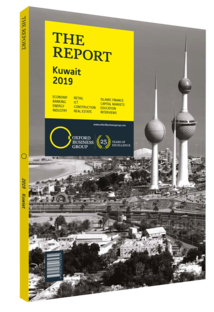The Kuwaiti market for real estate investment properties remains subject to broader demographic factors
Kuwait’s residential real estate market has long been divided into two main segments: private residential housing, which is only available to Kuwaiti and GCC citizens; and investment housing, which usually involves apartments targeted at short-term, expat renters, but is also open to GCC nationals. With expatriates making up around 70% of the population, developments within the investment housing segment are of key importance to the sector. It is in this area, too, that some of the largest private developers and contractors are present, producing some of the country’s most notable housing projects.
Investment Performance
According to the National Bank of Kuwait (NBK), in the fourth quarter of 2018 investment property sales grew by 19% to reach KD470m ($1.5bn), marking the fifth consecutive quarter of rising figures and a year-on-year (y-o-y) increase of more than 300%. This upward trajectory was the result of an increase in both the volume and the value of transactions, with the NBK’s real estate price index showing a 3.7% y-o-y increase, while the number of transactions jumped by 127% over the same period. Figures were also boosted by a number of large, one-off sales in December 2018, according to NBK. However, the first quarter of 2019 saw real estate sector sales moderate as a whole, mostly due to a sharp decline in investment properties, which fell by 47% to KD248m ($816.8m). While these are traditionally low-activity months, the drop is also attributed to softer demand from foreigners trying to get in the market.
The recent pattern in investment property sales does not accurately illustrate the longer-term dynamics of the market, which has been in recovery for four years. In 2015 quarterly sales figures for investment properties averaged KD306.7m ($1bn), but by 2016 and 2017 they slumped to KD204.2m ($672.6m) and KD165.1m ($543.8m), respectively, before recovering to KD392.9m ($1.3bn) in 2018 on the back of rising global oil prices. Showing a similar – if less extreme – pattern, the NBK property index fell from 211 in December 2015 to 190 in December 2016 and 181 in December 2017, but by the end of 2018 it was back up to 194.
Supply & Demand
This volatility can be attributed to the nature of investment property itself, which, as it is available to expatriates as well as nationals, is less dependent on demographic growth than private residential housing. This does, however, mean that government spending and broader economic performance play a more significant role.
Looking ahead, the high number of projects on the way is a positive sign for the segment in the short and medium term, as government capital expenditure continues to increase (see Economy chapter) and new projects spur demand for labour. Such a rise would be welcomed by investors in the segment, as expatriate population growth has been declining from an average of around 5% per annum in 2008-09 to 2.8% in 2018. This was only slightly higher than population growth of Kuwaiti citizens, of 2.4%. Efforts to shore up the number of nationals in the workforce have contributed to the drop in foreigner numbers, as existing labour laws mandate expats leave Kuwait once their contracts finish.
In addition, the construction and finishing of new apartments will bring more supply to the market in the years ahead, which will likely contribute to lower prices. Indeed, the strong supply in the investment segment is widely seen to be behind a softening in rent prices in recent years, with these falling by a month-on-month average of 0.7% in March 2019, reflecting a weakness in the sector, according to the NBK, which suggests that this trend may continue throughout 2019. Going forward, sustaining recent growth in investment housing will therefore depend greatly on matching supply and demand with implications beyond the broader housing market itself.
You have reached the limit of premium articles you can view for free.
Choose from the options below to purchase print or digital editions of our Reports. You can also purchase a website subscription giving you unlimited access to all of our Reports online for 12 months.
If you have already purchased this Report or have a website subscription, please login to continue.

